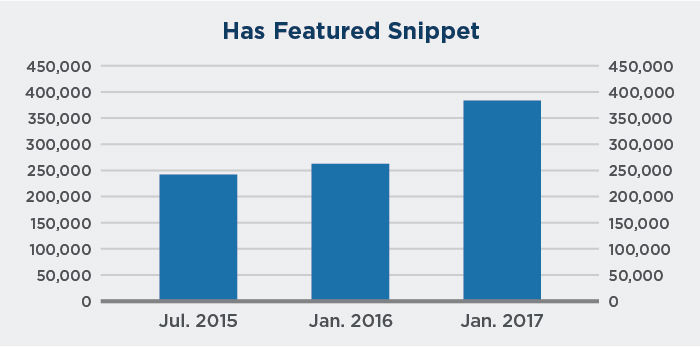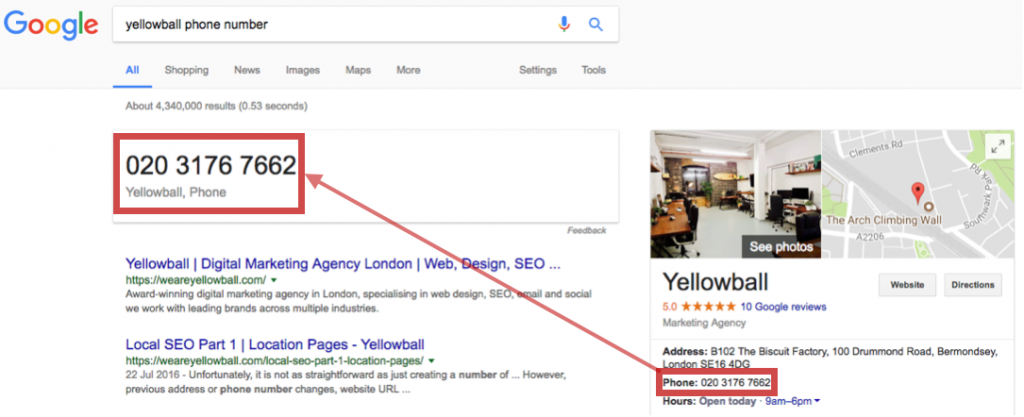SEO is an exceptionally fast-paced industry, and sometimes keeping on top of the latest updates and imminent changes can be a full-time job in itself.
One factor that is having an unprecedented effect on organic search is voice search. The combination of an increase in mobile searches and the rise in voice assistants has meant that the way in which people are searching for information online is changing dramatically.
Whether it’s Siri, Cortana, Amazon Echo, Google, or another robot friend, there is no questioning the importance of voice search. According to Google, more than half of queries will be voice search by 2020, and this requires a refreshed approach to SEO.
Featured snippets
One of the key aspects of this is featured snippets, as these are the results which are read aloud in response to voice searches. Featured snippets are often referred to as ‘Position Zero’, a phrase coined by Pete Meyers. They are the direct answer results that appear at the top of the SERPs in a box, and they often include a link back to the source of the answer.
Source: Stone Temple
According to Stone Temple Consulting, nearly 30% of 1.4 million Google queries tested now show Featured Snippets. That’s a lot of affected searches. Updating your search strategy to include optimization for featured snippets should therefore be a priority.
The key point to remember with featured snippets is that if a searcher is using voice search and expecting a verbal reply, they will not be presented with a choice of results. Instead, only one result is read out and where there is a featured snippet, this will be the choice of the voice assistant.
You could have the most mind-blowing and enticing meta description and title tags in the world, but if you’re not in that sought after position zero, then your lovingly crafted content will not be read aloud and will therefore remain both unseen and unheard by the searcher.
Long-tail keywords
Of course the key difference between voice search and standard search is the use of more natural, conversational language. This new style of search and query formats must be factored into your strategy. Cue long-tail keywords!
The first step in your journey to the exclusive realm of featured snippets is to identify the informational queries related to your product or services. Use keyword tools, but also ask customers and consider the frequently asked questions you receive on a regular basis.
Answer the Public is a fantastic tool for these more conversational search queries. The tool allows you to dig deeper into user intent by separating the results into question starters, such as ‘who’, ‘why’ and ‘how’. Build on this research by uncovering other similar queries, using the ‘People also asked’ feature on Google.
Test the questions that you generate by typing them into Google and analyzing the results of the featured snippets. Use these as a basis, but work out what you could add or improve on to make the result even better. Perhaps the article source does not provide much further information, or perhaps the current answer displaying isn’t long enough.
Optimizing content
The next step is to write a response to these questions, which is likely to be in the form of a blog post. Sure, Google only shows a small percentage of the text from an article in the featured snippet, but this does not mean that your article should only answer the question directly.
Include a direct response, but expand on this further in the article and provide depth. We all know that Google loves depth of information and given that featured snippets provide the option to click through to the source, you need to be offering additional information that could be of use to the reader.
Adopt the formula of answering the question directly and then follow it up by covering other related search queries. This should help you cover all the bases and achieve that coveted spot. Ultimately, you may need to do a bit of testing and reiterating to see what works best.
It is also worth integrating more Q&A style formats into your content. These do not have to just be limited to an FAQ page and it is worth revisiting how you can optimize some of your content to fit this Q&A style. The easier you can make it for Google to pull the featured snippet from your content, the more likely you are to appear in that prized position zero and therefore benefit from voice search as well.
More than a third of featured snippets and knowledge boxes contain an image, so another tactic to experiment with is to utilize different formats, such as tables or graphs. Try using numbered points to break up the content into simple steps, as this helps to optimize the content for voice search.
Plus, if there are too many steps to display in the featured snippet, then Google will include a read more button that links through to your website, which can be an effective way of converting people from voice search into website traffic.
Local searches
Voice search is characterized by its prevalence on mobile devices and its focus on local searches. This is of paramount importance to local search strategies, especially given that 50% of mobile visitors who perform a local search will visit a store within one day.
Although these may not bring up featured snippets, they do reveal the Google My Business profiles, which can be read aloud as directions. In fact, directions are one of the most popular queries for voice search, unsurprising given the push towards hands free, particularly when driving.
Source: Google Official Blog
As far as local searches go, you need to make sure that all of your contact information is as accessible as possible on your site. Make Google’s life easy when it comes to crawling your site; you’ll be more likely to feature high up in the featured results and therefore be the winner of the voice search game. Ensure your contact information isn’t simply within an image or this will certainly damage your chances of appearing.
You know what else you can do to make the Google bots even happier? Schema markup – it will significantly increase the chances of obtaining a featured snippet.
It goes without saying that you need to keep your Google My Business up to date. Again, this should be part of your SEO efforts anyway, so no sweat there. Once your contact information is updated and where it should be, help the process along by submitting a sitemap to Google. Also submit any new content that you add to your site, just to speed up the process.
Mobile ready
Don’t forget to focus on mobile. Given that the vast majority of voice searches occur on mobile, it is essential that the mobile version of your site is fully optimized.
I know what you’re thinking: but voice search entails that only the featured snippet will be read aloud, so what’s the point of a fancy pants mobile friendly website? Well, Google likes fancy pants mobile friendly websites, that’s why. Don’t believe me? Riddle me this – why are they moving to a mobile-first index?
Even using voice search, there is always the chance that the user decides to delve into their query further to read more. In which case they’ll head straight to your site, and if it’s not delivering in terms of user experience then you won’t be staying in that top spot for long.
Conclusion: User intent is key
When it comes to trying to get that valuable featured snippet place, there is no special technique that is any different to standard SEO. In short, if you are thinking carefully about user intent then you should be fine.
Given the recent updates like Hummingbird and Rankbrain, user intent should already be a priority in your search strategy. So if you’re doing this then your content should already be optimized for featured snippets and voice search.
Using voice search for commercial intent is only in its infancy at the moment. However, we are only expecting this to evolve and develop over time as people become more and more comfortable with voice search.
So you’d best be ready!
source https://searchenginewatch.com/2017/09/04/how-to-optimize-featured-snippets-for-voice-search/



No comments:
Post a Comment